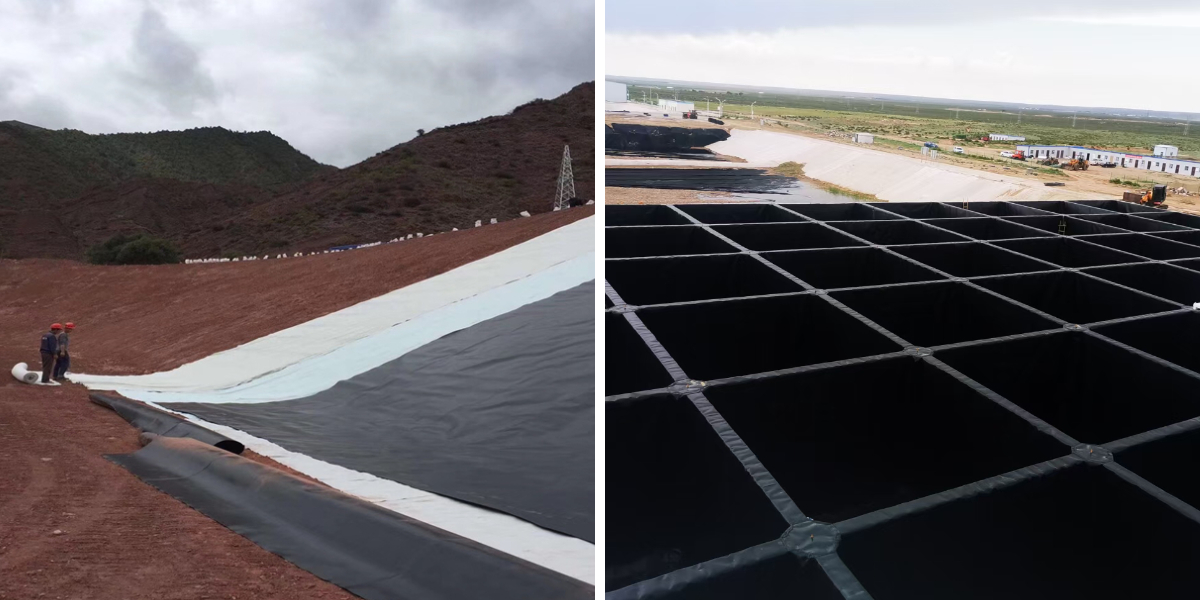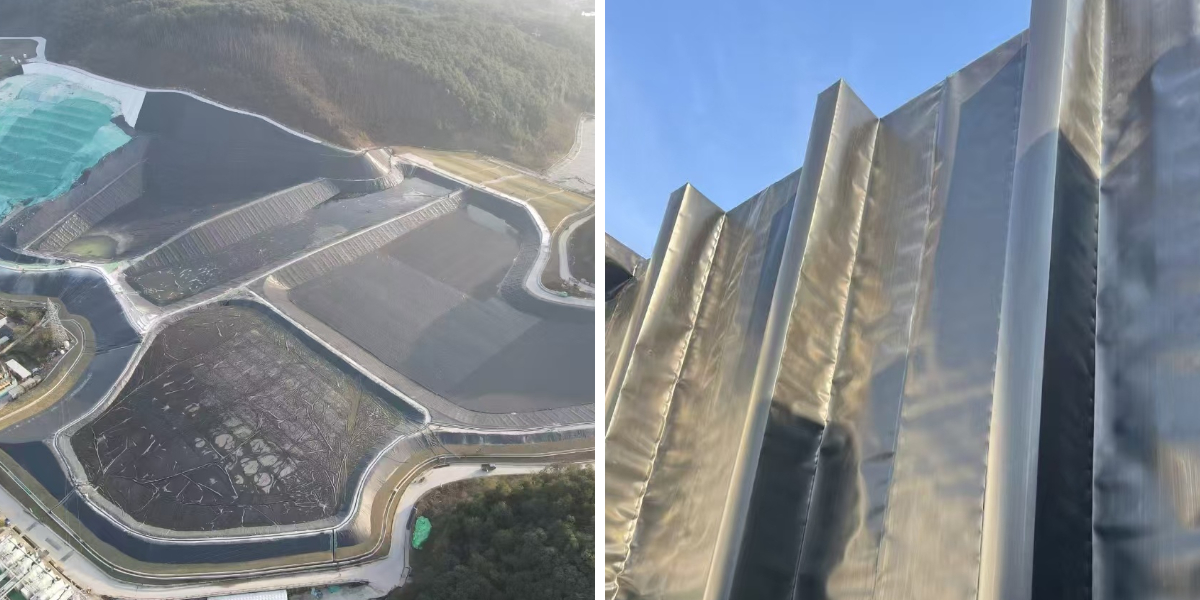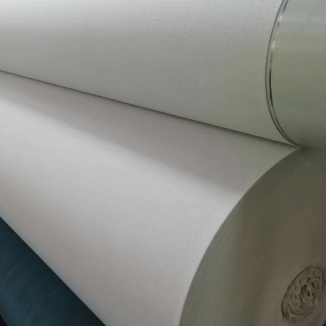Step-by-Step Guide: How to Install a Geomembrane Liner
Installing a geomembrane liner is necessary for tasks requiring impermeable barriers, such as landfills, ponds, or industrial containment systems. Among materials, HDPE (High-Density Polyethylene) geomembranes stand out for their durability, chemical resistance, and cost-effectiveness. This information breaks down the set up process, emphasizing geomembrane for landfill functions and HDPE membrane quality practices.
1. Understanding Geomembranes: Why HDPE?
Before installation, hold close the fundamentals of geomembrana in HDPE (Spanish time period for HDPE geomembrane). HDPE is a thermoplastic polymer famend for:
Chemical Resistance: Withstands acids, oils, and wastewater.
UV Stability: Long-lasting below daylight exposure.
Tensile Strength: Resists tears and punctures throughout handling.
For geomembrane for landfill projects, HDPE’s low permeability (1x10⁻¹² cm/s) prevents leachate leakage, defending soil and groundwater. Its flexibility additionally contains uneven terrain, making it perfect for complicated sites.
2. Pre-Installation Preparation
Proper planning ensures a seamless set up and long-term performance.
2.1 Site Assessment
Soil Analysis: Test for sharp objects, rocks, or natural count number that ought to puncture the liner.
Slope Stability: Ensure slopes are ≤2:1 (horizontal:vertical) to forestall slippage.
Drainage Design: Plan for subgrade drainage to keep away from hydrostatic strain on the HDPE membrane.
2.2 Material Selection
Thickness: Choose 60 mil (1.5 mm) for reasonable purposes or one hundred twenty mil (3.0 mm) for heavy-duty geomembrane for landfill projects.
Surface Texture: Smooth liners swimsuit liquid containment; textured liners decorate friction on slopes.
Certifications: Verify compliance with ASTM D7177 (for seam strength) and GRI-GM13 (for cloth quality).
2.3 Tools and Equipment
Welding Machines: Dual-track warm wedge welders for seams.
Non-Destructive Testing (NDT) Tools: Air lance testers to test seam integrity.
Safety Gear: Gloves, goggles, and non-slip boots for crew protection.
3. Subgrade Preparation
A smooth, steady subgrade is non-negotiable for geomembrana in HDPE success.
3.1 Clearing and Grading
Remove debris, roots, and vegetation the usage of excavators or rakes.
Grade the floor to a 2% slope for drainage, making sure no depressions gather water.
3.2 Compaction
Compact soil to ≥95% Proctor density the use of vibratory rollers.
Test compaction with a nuclear density gauge or sand cone method.
3.3 Protection Layer
Lay a 300 mm geotextile layer to cushion the HDPE membrane from subgrade abrasion.
For rocky terrain, add a one hundred mm sand cushion under the geotextile.
4. Unrolling and Positioning the HDPE Membrane
Handle the liner with care to keep away from damage.
4.1 Storage and Handling
Store rolls vertically in a shaded region to stop UV degradation.
Use cranes or forklifts to transport rolls; by no means drag them on the ground.
4.2 Deployment
Unroll the liner parallel to the slope’s path to reduce wrinkles.
Allow 10% greater fabric for anchoring and adjustments.
Use weights (e.g., sandbags) to keep the liner in location all through positioning.
4.3 Anchoring
For geomembrane for landfill applications, anchor the liner using:
Trench Anchors: Bury the liner 0.6 m deep in a V-shaped trench.
Concrete Anchor Blocks: Secure edges with precast blocks spaced each three m.
5. Seaming Techniques for HDPE Membranes
Seams are the weakest point; suitable welding is vital.
5.1 Seam Types
Field Seams: Joins sheets on-site the use of thermal or extrusion welding.
Factory Seams: Pre-welded panels for massive tasks (e.g., geomembrane for landfill liners).
5.2 Thermal Welding Process
Clean Surfaces: Wipe seams with isopropyl alcohol to put off dust.
Test Weld: Create a 0.3 m take a look at seam and test with a peel tester (target: ≥100 N/cm).
Main Weld: Use a dual-track welder at 270–300°C, overlapping sheets by means of seventy five mm.
Cooling: Let seams cool for 10 minutes earlier than testing.
5.3 Extrusion Welding
Ideal for repairs or detailing round pipes.
Melt HDPE rods with a handheld welder, filling gaps between sheets.
6. Quality Control and Testing
Ensure each and every seam meets standards.
6.1 Visual Inspection
Check for burns, holes, or misaligned seams.
Mark defects with chalk for repair.
6.2 Non-Destructive Testing (NDT)
Air Lance Test: Insert pressurized air below the seam; bubbles point out leaks.
Electrospark Test: Use a high-voltage probe to become aware of pinholes (for clean liners).
6.3 Destructive Testing (DT)
Cut 25 mm extensive samples from seams for tensile trying out (ASTM D6392).
Discard and reweld any seams failing ≥80% of base cloth strength.
7. Final Inspection and Protection
Before masking the liner, habits a thorough review.
7.1 Walkthrough Check
Inspect all seams, anchors, and penetrations.
Ensure no wrinkles exceed 300 mm in top (to stop stress cracking).
7.2 Protection Layer Installation
Cover the HDPE membrane with a 300 mm geotextile layer to guard in opposition to UV and bodily damage.
For geomembrane for landfill projects, add a 600 mm drainage layer (e.g., gravel or geocomposite).
7.3 Backfilling
Use clean, angular mixture (≤50 mm) to keep away from puncturing the liner.
Compact backfill in a hundred and fifty mm lifts to forestall settlement.
8. Post-Installation Maintenance
Extend the liner’s lifespan with movements care.
8.1 Regular Inspections
Schedule month-to-month exams for punctures, specially after storms.
Use infrared thermography to observe hidden leaks in geomembrana in HDPE systems.
8.2 Repair Protocols
Patch minor tears (≤50 mm) with a one hundred fifty mm spherical HDPE patch and extrusion welding.
For large damage, substitute the complete panel following unique seaming methods.
8.3 Vegetation Control
Prohibit planting close to the liner; roots can penetrate even textured HDPE membranes.
Apply herbicides or deploy root obstacles if necessary.
Conclusion: Key Takeaways for HDPE Geomembrane Success
Installing a geomembrane for landfill or containment machine needs precision at each stage—from subgrade prep to post-installation maintenance. By prioritizing cloth quality, meticulous seaming, and rigorous testing, you make sure a durable, leak-proof barrier that protects the surroundings for decades.
For complicated projects, seek advice from engineers specializing in geomembrana in HDPE applications. Their understanding can optimize designs for cost, safety, and regulatory compliance.
Final Tip: Always record every set up step with pix and reports. This creates a precious reference for future inspections and audits, safeguarding your project’s popularity and functionality.
Contact Us
Company Name: Shandong Chuangwei New Materials Co., LTD
Contact Person :Jaden Sylvan
Contact Number :+86 19305485668
WhatsApp:+86 19305485668
Enterprise Email: cggeosynthetics@gmail.com
Enterprise Address: Entrepreneurship Park, Dayue District, Tai 'an City,
Shandong Province









